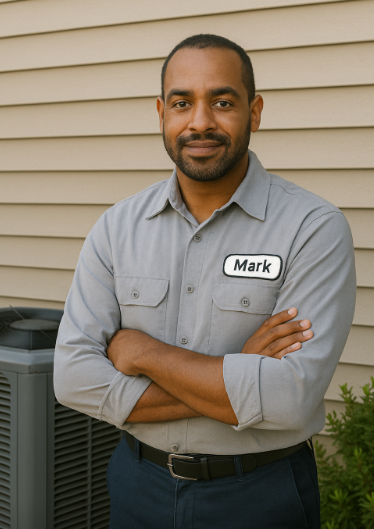When you oversee large HVAC investments—whether for multi-family buildings, commercial properties, or high-end residential complexes—you need data, insight, and strategy. HVAC decisions aren’t just about keeping rooms cool; they’re about long-term cost control, reliability, and lifecycle ROI.
A question I get frequently from property managers and business owners is:
“What are Ruud AC unit prices, and is Ruud a smart choice compared to newer high-efficiency alternatives?”
In this guide, we’ll cover:
-
The current Ruud air conditioner pricing landscape
-
What drives Ruud AC costs
-
How to evaluate quotes like a strategic buyer
-
Comparing Ruud with modern split-system solutions
-
How to make long-term cost-effective decisions for your properties
Understanding Ruud’s Market Position
Ruud is part of the Rheem family, which means it shares design, manufacturing, and parts strategy with one of the industry’s leading HVAC brands. Ruud has consistently positioned itself in the mid-tier market, providing reliable, value-focused systems without the premium price of ultra-high-efficiency units.
Ruud’s current product line covers 2 to 5 ton capacities, including the Endeavor and Achiever series. These units deliver up to approximately 17 SEER2 efficiency, suitable for most commercial and residential applications.
For a detailed overview of Ruud’s products, specifications, and warranty coverage, you can visit the official Ruud air conditioner product page for reference.
What Drives Ruud AC Unit Prices
Many buyers confuse sticker price with true cost. To make strategic decisions, understand the variables:
-
System Size – 2, 3, 4, and 5-ton units have different material and installation costs. Larger systems cost more, but efficiency gains can offset operational costs.
-
SEER Rating – Higher SEER2 units cost more upfront, but they reduce long-term energy costs.
-
Labor Complexity – Installation costs depend on ductwork modification, line set length, electrical upgrades, and site accessibility.
-
Parts and Features – Smart thermostats, zoning capability, and premium controls add to the price.
-
Refrigerant Type – Modern systems are moving toward R-32 or R-454B, which may affect upfront pricing.
According to industry research, the installed cost of Ruud air conditioners ranges from $3,000 to $8,500, depending on tonnage, efficiency, and installation complexity (HomeGuide).
Ruud AC Unit Prices by Size
Here’s a realistic breakdown for budgeting purposes:
| Ton | Unit Only | Installed | Notes |
|---|---|---|---|
| 2 Ton | $1,200–$3,600 | $3,200–$6,600 | Suitable for small homes or offices |
| 3 Ton | $1,600–$4,200 | $3,400–$7,200 | Most common in mid-size residential/commercial spaces |
| 4 Ton | $1,800–$4,700 | $3,600–$7,700 | Larger homes or commercial spaces with multiple zones |
| 5 Ton | $2,400–$5,500 | $4,200–$8,500 | Full-service buildings or multi-family complexes |
These numbers include labor, parts, and standard installation. More complex installations, such as rooftop units or areas with limited access, can push total costs higher. For additional market insight, see Ruud’s cost and specification guide.
How to Evaluate “Ruud AC Cost” Quotes
When a contractor presents a quote, a strategic buyer should ask:
-
What is the line-item breakdown? – Equipment cost vs. labor vs. additional materials.
-
Confirm the SEER2 rating and model number – Ensure you’re comparing like for like.
-
Check refrigerant type – Older R-410A systems are less future-proof than R-32 systems.
-
Evaluate installation challenges – Access, ductwork modifications, and electrical upgrades can significantly impact labor costs.
-
Compare total cost of ownership – Factor in energy savings, repair history, and warranty coverage.
A solid resource to understand long-term efficiency and cost is the Department of Energy’s guide to AC efficiency which outlines how operational savings can outweigh initial cost differences.
Ruud vs. Modern Split-System Alternatives
Let’s consider the Goodman 3 Ton 14.5 SEER2 R-32 Bundle for comparison:
-
Centralized system with modular components
-
Uses R-32 refrigerant for improved efficiency and regulatory compliance
-
Offers consistent airflow across multiple zones
-
Often lower total lifecycle cost compared to individually installed window or packaged units
This comparison shows why many strategic buyers consider modern split systems as alternatives to mid-tier packaged units like Ruud.
For more on energy-efficient bundle systems, see the Furnace Outlet’s Goodman bundle guide for reference.
Factors Influencing Lifecycle Costs
A strategic buyer should consider not only upfront Ruud AC unit prices but also:
-
Energy Efficiency – Higher SEER2 systems reduce long-term electricity bills.
-
Repair History – Older units with frequent repairs can outweigh upfront savings.
-
Warranty Coverage – Ruud typically offers 10-year limited warranties on key components. (Ruud warranty info)
-
Maintenance Costs – Labor and parts for routine service, particularly in commercial settings.
-
Operational Downtime – In commercial properties, a failed system can disrupt tenants and reduce productivity.
Strategic Buying Advice for Large-Scale Purchases
-
Document historical repair and energy data – Evaluate TCO.
-
Ask for multiple quotes – Compare Ruud with Goodman, Carrier, and Trane offerings.
-
Negotiate for line-item clarity – Insist on a breakdown of labor, materials, and equipment.
-
Consider bundled packages – Centralized systems with higher SEER2 ratings often reduce long-term costs.
-
Plan for refrigerant compliance – R-32 systems are more future-proof than older R-410A units.
For detailed insights into lifecycle cost and efficiency, Energy Star commercial HVAC resources provide a solid benchmark for buyers.
Summary
-
Ruud AC unit prices vary from $1,200–$5,500 for the unit alone and $3,000–$8,500 installed, depending on size and SEER2 rating.
-
Premium features and high-efficiency models increase cost but reduce long-term energy expenses.
-
Strategic buyers must consider lifecycle costs, including energy consumption, repair frequency, warranty, and refrigerant type.
-
The Goodman 3 Ton 14.5 SEER2 R-32 Bundle serves as a modern benchmark for comparison.
-
Always request a detailed line-item quote and compare multiple systems to make the best long-term investment.
Ruud remains a reliable, mid-tier option for buyers who want recognizable brand quality without paying premium prices—but understanding the total cost of ownership is the key to making an informed choice.







